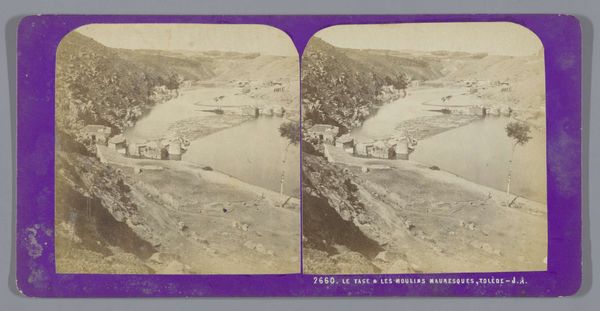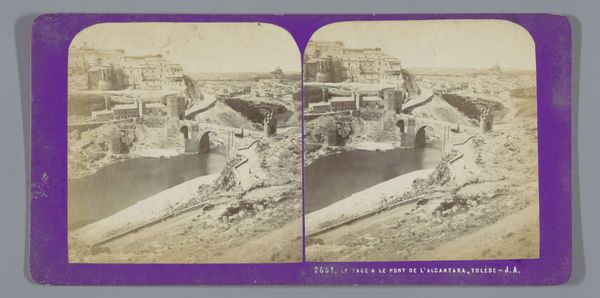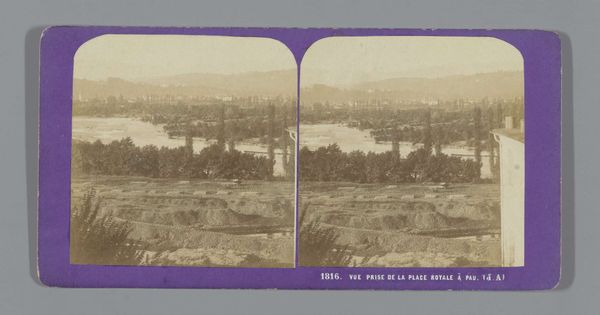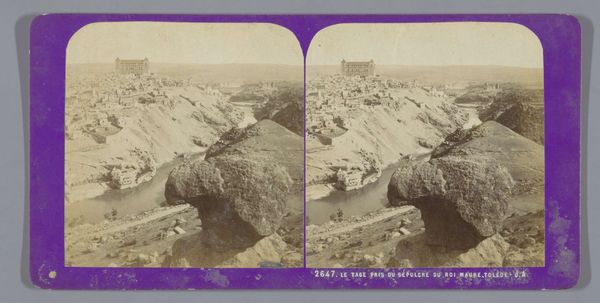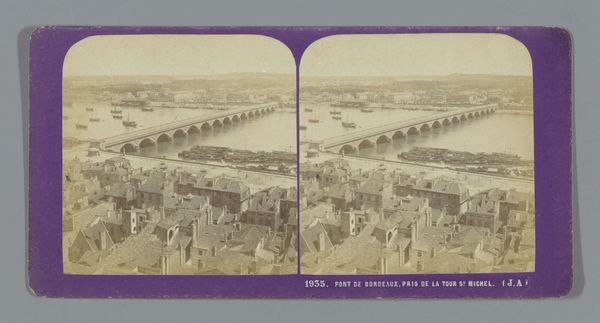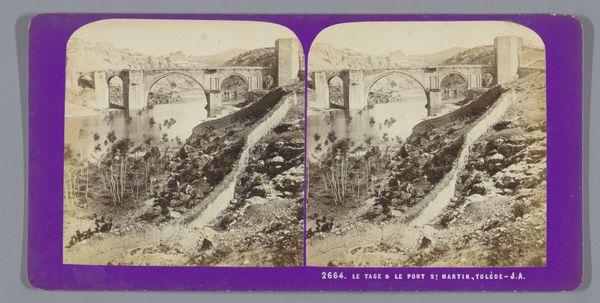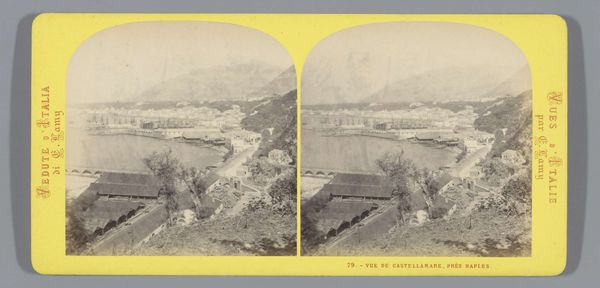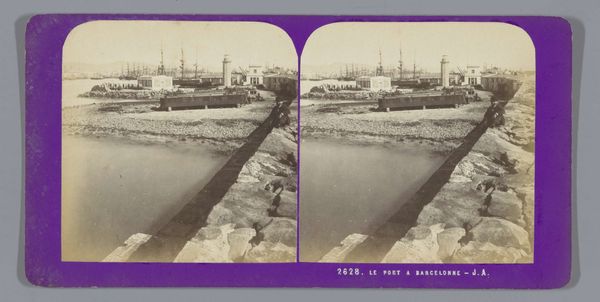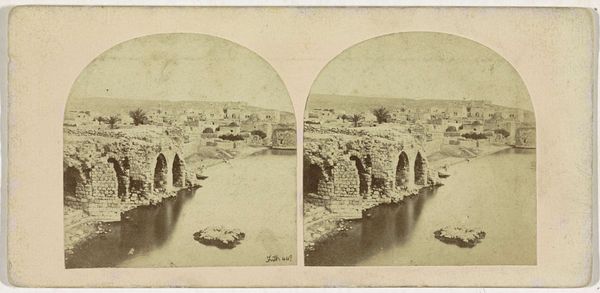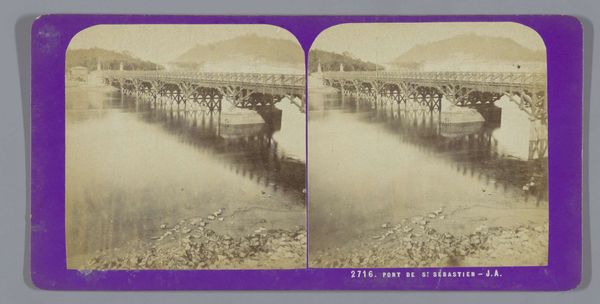
Gezicht op de Taag te Toledo, met op de achtergrond de Puente de Alcántara 1862 - 1876
0:00
0:00
daguerreotype, photography
#
landscape
#
daguerreotype
#
photography
#
coloured pencil
#
cityscape
Dimensions: height 85 mm, width 170 mm
Copyright: Rijks Museum: Open Domain
Jean Andrieu created this stereoscopic photograph of the Tagus River and Alcántara Bridge in Toledo, Spain, sometime in the mid-19th century. The stereoscopic format itself was a product of its time, a popular form of entertainment that brought distant places into the homes of a growing middle class. The photograph’s muted tones evoke the historical weight of Toledo, a city with Roman, Visigothic, and Islamic pasts. The Alcántara Bridge, prominently featured, stands as a symbol of Roman engineering prowess and the enduring power of empire. Consider, too, the role of photography in shaping perceptions of place. As travel became more accessible, images like these fueled a growing interest in the ‘exotic’ and ‘picturesque’. They also reinforced existing social hierarchies, framing the world through a Western lens. To truly understand this image, we need to delve into the social and cultural context of 19th-century Spain, exploring the rise of tourism, the development of photographic technology, and the enduring fascination with the past. Through such research, we can begin to unpack the complex layers of meaning embedded within this seemingly simple photograph.
Comments
No comments
Be the first to comment and join the conversation on the ultimate creative platform.

